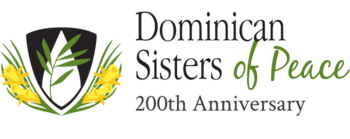In 1866, Bishop Lavialle of Louisville asked the Dominican Friars of St. Louis Bertrand Church to open a parish school. The friars turned to the sisters at St. Catharine, who sent two sisters to begin the elementary school of St. Louis Bertrand and plan for a boarding school to be named Holy Rosary Academy.

St. Louis Bertrand opened its doors in an abandoned barracks building on Seventh Street. Students ages 6-18 were welcomed to the school, and so many attended that it was not long before the Sisters needed to expand. A third sister from St. Catharine arrived about six months later, and the school acquired a nearby cottage to create a third classroom. The school educated of some of Louisville’s historical business and professional leaders.
In 1892, the St. Louis Bertrand school moved into the Dominican priests’ home, a newer and therefore more modern school. There the school remained until it closed in the mid-1960s as families moved into the suburbs and new schools opened.
St. Louis Bertrand school housed people who were driven from their homes by the Ohio River during the historic floods of 1937, when nearly one million people were left homeless. One classroom was used as a field hospital, while the women of St. Louis Bertrand Church prepared meals in the priory. Volunteers transported these meals to the school on a makeshift bridge of wooden planks laid across old school desks to stay out of the flood water in the school’s yard.
Holy Rosary Academy was established in 1867 and experienced several financial setbacks in its early years. The first building, located near St. Louis Bertrand at Sixth and St. Catherine Streets, accommodated both day and boarding students in grades 1-12. The sisters were unable pay the mortgage, and the school property was foreclosed upon. In 1868, the sisters purchased a residence at Eighth and Kentucky Streets and reopened the school. Financial difficulties compelled the sisters to frequently solicit assistance from the community, in addition to holding a fundraising picnic, but by 1880, the school was self-supporting.

The community around the second home of Holy Rosary Academy began to deteriorate, forcing the school to close in 1894 until 1896, when the academy moved to the former Greystone Apartments on West Ormsby Ave. It was to this address that students and sisters from St. Catharine retreated when their school burned in 1904.
The academy moved again in 1915 and grew to four buildings within two years. Here, Holy Rosary shared its auditorium for several civic events, including a concert with a famous South American pianist. The school was also used by the sisters to provide care for soldiers at Camp Taylor during the Spanish Influenza pandemic. In 1955, Holy Rosary Academy moved to its largest, most modern, and final facility on Southside Drive and Kenwood Way, accommodating 400 students.
The first Holy Rosary Academy offered courses in composition, literature, mathematics, music, drawing, sewing and needlework. In the twentieth century, the curriculum added full preparatory academic and business courses, preparing graduates for college or futures as administrative assistants. The academy was first accredited by the Southern Association of Colleges and Secondary Schools (SACSS) in 1929. Along with the SACSS accreditation, Holy Rosary Academy was accredited by the Kentucky State Department of Education with an A rating from the academic year 1933-34, until it closed in 1977.







